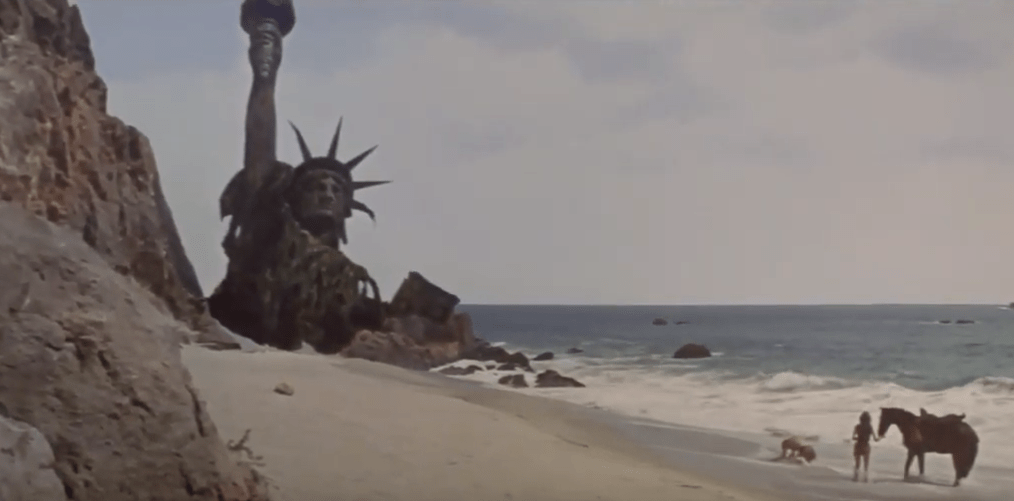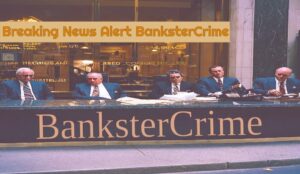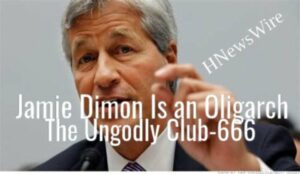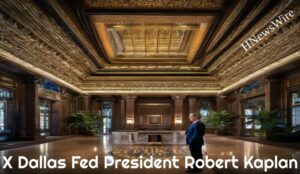This is Part 1 of a 4-part series.
fi·nan·cial·i·za·tion
/fəˌnanCHələˈzāSHən, fīˌnanCHələˈzāSHən/
noun
The process by which financial institutions, markets et cetera increase in size and influence.
This definition is about as complex as one finds in the popular financial media, nestled in a hyperlink somewhere between a continuous onslaught of graphs, numbers, and opinions shouted from frenetic podcasts. One enters financialization’s surface world as if it is the natural and evolved state of things, and leaves believing every increase in that buzz and energy must be good, progressive, and lead to some kind of a collective better tomorrow.
There is this perpetual urge and ever present push to “do something”. Everyone’s piling in – get in now or you’ll miss the boat. Thirty year mortgage refi rates are at historic lows. It has never been a better time to buy a house. Zero commission brokerage accounts click here (fees and restrictions apply). Buy, sell, or hold? What are you waiting for? Another all-time high! Synergies, paradigm shifts, raising the bar, the deal of a lifetime, low hanging fruit, win-win. Get off the fence, get your ducks in a row, step up to the plate, and think outside the box and push the envelope because failure is not an option. The business of America – is business.
Somewhat “deeper” discussions about financialization exist within the Fourth Estate front page editorials filled with explanations of its effects and non-explanations of its causes penned by an assortment of well-compensated Nobel Laureates, PhDs, think tank advisors, and Wall Street promoters. After reading such well-crafted pieces one barely senses the authors’ constrained yet directed criticisms of financialization nudging one’s doubts towards acceptance of “reforms” and away from underlying systemic issues. Adjustments and a minor compromise are always the solutions. A tweak here, a Congressional rider there, a new regulation or two should patch things up. Who could possibly argue against such esteemed credentials?
And then there are the “learned” journal tomes full of lofty enumerations of financialization’s effects, theories as to its complex workings complete with equations full of Greek letters and predicate logic, and so many competing ideas that the sum total of all this erudite thinking is a zero sum non-consensus that for all the tens of thousands of pages does not definitively identify causa principalis. Here are some random examples –
“Financialization refers to the increasing importance of finance, financial markets, and financial institutions to the workings of the economy.”
“A pattern of accumulation in which profit making occurs increasingly through financial channels rather than through trade and commodity production.”
“The fusion of the interests of domestic and foreign financial capital in the state apparatus as the institutionalized priorities and overarching social logic guiding the actions of state managers and government elites, often to the detriment of labor.”
The above three sentences penned by distinguished scholars took a combined twenty-four years of college to construct, so it is little wonder why it is so difficult for the uninitiated layman to compile the true workings and objectives of financialization. The more one reads, the closer one comes to this educated zero sum non-consensus and no closer to unlocking the secrets of not only why does financialization exist, but also why has a mass edifice of confusion been purpose built to hide these secrets?
Profits and risk mitigation are standard replies to that existential why, spoken with all the confidence bestowed by Fourth Estate economists. Mockery and conspiracy theory accusations follow every mention of the purpose built mass edifice of confusion surrounding financialization. But these are the ground level foot soldier answers that push one squarely back into financialization’s surface world, just more of that buzz and energy that is the perceived natural and evolved state of things. Profit motive – case closed. But profit and risk mitigation were achieved with the old industrial production and export model, so why has financialization today risen to supremacy? Higher profits and greater risk mitigation – just more begging the question, ad infinitum. But could there be hidden mechanisms at work facilitating this rise of financialization and, is there a larger opaque objective to it?
At a ground level perspective one generally sees the accumulation of money as power. But when one looks at “wealth” from a higher level perspective, it is actually vouchsafed, gathered up in that “free market” scrum called “competition” from the invisible hands of those with the ability to conjure money out of thin air and throw it into the general arena. And the working mechanisms within “wealth” accumulation also hold the mechanisms of “wealth” destruction and confiscation, so “wealth” cannot be power in of its self, as it can be both granted and denied, and therefore is only a tenuous grant of privilege. And granted by whom, by what higher authority? What class of people are above the power of money, control the mechanisms of “wealth” accumulation and destruction and confiscation, and are able to both vouchsafe and expropriate this privilege that money provides? Is there a higher order level design at work within financialization, and if so, what are its means and end goals?
This series examines and defines what financialization is, identifies what has enabled it to rise above all other economic activity in stature, and binds together financialization with the role it plays in this higher order design for the nation. The preceding essay The Evolution of Fiat Money, Endless War, and the End of Citizenship provides much of the underlying philosophical premises upon which this present work is constructed. It is necessary background towards a comprehensive understand of how financialization is ultimately regressive, dehumanizing, and will not lead to a better collective tomorrow – rather, it will serve as an evolutionary societal dead end for the bulk of humanity.

The Evolution of Commerce
For untold millennia the human economic condition remained that of the hunter-gatherer where simple goods of utility were produced and consumed by their users. Sharing produced goods among tribal members or stealing them from other tribes were probably about as complex as commerce got during this long stretch of pre-history. Then roughly 40,000 years ago cave paintings and sculpted objet d’art began to appear in the archeological record indicating some amount of leisure was afforded our ancient ancestors. This advent of leisure appears to have led to the development of other time consuming and non-essential activities like ritualistic burial practices and simple jewelry craft. Soon afterward the first instances of proto-industrial labor specialization appears where flint, chert, and obsidian were quarried to mass produce a surplus of sophisticated arrowheads, stone axes, spear tips, and implements used to skin and dismember hunting kills. It is this first indication of surplus that suggests some form of trade existed between our Mesolithic brethren and is supported by the wide distribution of these manufactured tools far beyond their quarry and production sites. From analogy to Mesolithic peoples encountered during European colonialization of the Americas, our ancestors did not use money and therefore, surplus was not produced to obtain profit, but instead was an ancient form of “foreign policy” that brought the various scattered tribes together and served as a means of maintaining cordial relations. Thus in the Mesolithic world, our ancestors did not prosecute trade wars, but likely practiced a kind of trade peace.
Our Neolithic ancestors developed additional survival skills like animal husbandry and proto-farming so they tended to spend more time in one place and their settlements began to take on a permanent nature. They depended less on hunting and gathering and more on tending animals and crops for their existence. Surplus food was stored as reserve for times of scarcity and individual private ownership is not well defined in the archeological record. Proto-industry now matured into industry where labor specialization expanded with the rise of cities requiring large amounts of standardized building materials, pottery stockpiles, and large scale meat, cooking oil, and grain processing capabilities. Within these cities we begin to see the development of a managerial class – the priests and their administrators – who control the cities’ collective food surplus but do not own it. Using this control over food surplus the theocratic-managerial class were able to entice workers away from their own food producing activities to instead undertake civil works projects like digging and maintaining irrigation canals, excavating cisterns, constructing perimeter fortifications, erecting public buildings, the provision of sanitation, and maintenance of a bureaucracy to provide project services like design, procurement, and execution. Again by analogy with Neolithic peoples encountered during colonialization, all of this occurred in a world without money and would not have been possible without the rise of barter trade and most importantly – the advent of labor barter.
The civilized Neolithic world had a quasi-collective property ownership structure evidenced by large repositories of unearthed clay pots used to store grain, cooking oil, and wine with no identifying ownership markings, a prevalence of communal buildings in the city layout – possibly mess halls, interconnected housing units et cetera. Barter was the sole form of commerce, and is defined here as the mutually agreed exchange of goods and / or services between individuals without the aid of an intermediate exchange means (i.e., money). Thus barter suggests some nascent concept of private ownership, and labor barter implies a notion of independence from the collective where one “owns” his labor to offer in exchange for rations from the collective stores. With the growth of cities and the collection of groups of cities into civilizations, labor barter became the primary economic transaction in the civilized Neolithic world where money and private ownership of large surplus does not appear to exist. Thus labor barter is one of humanity’s oldest and most fundamental social interactions and is a critical component to what it means for an individual to belong to a complex society – a necessary part of being human among one’s fellow men.
Labor barter allowed individuals to temporarily walk away from their personal food producing activities to provide collective labor for civil projects, yet still procure food from the city surplus for them and their families and was the necessary prerequisite for the development of both cities and industry. E.g., it was common practice in ancient Egypt for Nile Valley farmers to move to the mountain quarries during the flood season and work there until the waters subsided, where they would then return home to survey their fields and plant, sow, and harvest that year’s single crop. A societal equilibrium was established where the laborer received food for his labor and the theocratic-managerial class got the manual labor they needed for their public works projects, and more elaborate benefactor schemes were provided to full time skilled laborers and the administrative bureaucracy. This equilibrium worked successfully for several millennia as archeology suggests there was no need for slavery in the civilized Neolithic world, nor was there the need to force people into a labor corvée to accomplish these ancient civil works projects.
As cities grew and our Neolithic ancestors entered the Bronze Age, it did not take long for larger families to become predominate under the barter trade system as they could pool their superior collective resources to accomplish more ambitious endeavors. Over time these large families accumulated a surplus to themselves and used it to purchase the labor of others in pursuit of accumulating further surplus to themselves with which they then exchanged for land, animals, implements, and materials to build larger homes. This development is evident in the archeological record in Bronze Age cities where for the first time there are clearly demarcated housing units and the clay pots in grain repositories bear ownership markings. With the advent of bronze in faraway mountain lands these families assembled some of their surplus into caravans for export and trade with early metallurgists, salt workers, and native metal and gem miners. Laden with goods for their return journey, these early traders picked up other exotic goods from cities along the route home. Once home, these traders then exchanged the metals, salt, and exotic goods with other families possessing surplus and generated a “profit” in these exchanges – e.g., 50 jars of commonly available wine could be traded for scarce brass ingots that were brought back home and traded again for 200 jars of wine. Thus begins the dawn of private property and private enterprise embodied in this surplus of goods accumulated through one’s own endeavors – the mercantile period of human history. Mercantilism is defined here as the exchange of goods for the purpose of generating a profit where the merchants and creditors of goods assume full liability and risk in the event of loss, theft, spoilage et cetera. There is no mechanism within mercantilism to lessen or adsorb these potential risks and real losses.
Trade between cities and civilizations flourished through the Bronze Age into the Iron Age with labor barter, goods and service barter, and mercantile commerce all practiced simultaneously and settling into a similarly ordered societal hierarchy with the theocratic-managerial class now replaced at the highest level with kings and their royal lieutenants. These kings assumed ownership over the collective surplus that was used more and more to provision standing armies and provide for a coterie of advisors and enforcers. And for the first time, we observe not only a surplus in food stuffs but a surplus in gold and silver accumulated by the sovereign obtained through war, tribute, and the collection of taxes. Thus it appears that this change in ownership of the communal surplus is the seminal factor in the formation of standing armies and prosecution of wars of conquest. And with the advent of standing armies and taxes, we also observe the first instances of slavery and people forced into a labor corvée.
With rising Iron Age trade, networks of extensive, well maintained, and secured overland trade routes were constructed complete with toll and excise stations, and port cities proliferated for the transport of goods by sea. It is safe to assume that with the expansion of trade facilities, the profits from mercantile endeavors were expanding as well and so too was the tax take from these activities as cities grew larger and better fortified and offered increased public amenities. So the rhythm of civilized Iron Age humanity was established by the activities of trade, supported by the actions of agricultural, pastoral, and industrial producers with piracy, highway robbery, and war always lurking to disrupt this rhythm. And thus the mercantile story remains consistent for approximately 4,500 years from the kings of Akkad to the French Revolution where the mercantile model operated and spread to nearly every corner of Eurasia and North Africa. Despite the many advents and inventions to facilitate mercantile trade – usury, credit vehicles, precious metal coins and their use as a store of value in of its self, coin debasement and inflation, et cetera – this commercial model in its essential form as defined earlier continued unabated despite a kaleidoscope of empires, peoples, and technologies rolling through it. That was, until the late 17th century arrived to the City of London Corporation and a small group of bankers and promoters would change the world forever.
At the onset of the end of mercantilism all modes of commerce described up to this point were practiced at some place in the world. The hunter-gatherers remained active with the Bushmen of southern Africa, the arctic Eskimo, and the Australian Aborigine. Mesolithic cultures were predominant in what was to become the United States and Canada, and civilized Neolithic peoples were predominant in Mesoamerica and the northern Andes mountains of South America, although they had declined significantly from their technological and cultural zeniths. Thus a great swath of the world lay open to musket, canon, and credit based ventures seeking unlimited stocks of exotic goods and undiscovered gold and silver reserves for the taking. But that taking was expensive, dangerous, and represented a significant risk and not unlikely loss of large quantities of gold and silver to both entrepreneur and creditor. To get at these exotic goods and untouched mineral resources, one had to first invade and subjugate these regions, and due to the extreme investment risk inherent in colonization, a new commercial model was needed to make these endeavors profitable – to generate a “positive expected value”. And that new commercial model was capitalism.
The imperative for the development a new commercial model was presented with the “conquest funded by physical money” rapid rise and failures of the Spanish and Portuguese states. Although the 16th century Spanish conquest of the Americas brought the crown tremendous amounts of silver and gold, the costs to support their navy flotillas to protect and transport these riches were great, and losses through piracy and storms at sea occurred regularly. These losses could have been adsorbed and profits maintained had colonial extraction been the only pursuit of the Spanish kings. However, these riches soon drew the envy of rivals and grew the European continental aspirations of the Spanish kings themselves. So when the high operating costs of colonial wealth extraction were combined with the very high costs of prosecuting wealth depleting wars closer to home – wars paid for in physical silver and gold – the mercantile commercial model began to show its flaws when applied to modern super-states as the Spanish treasury depleted with every battle. This mature mercantile commercial model could not simultaneously secure extensive colonial trade networks and simultaneously prosecute large scale wars of attrition, and it inevitably led to state bankruptcy and military defeat. The sovereign existing in the mercantile commercial world therefore had to choose between either trade or war, but ego generally led to the sovereign choosing both and therefore secured the downfall of many prosperous mercantile states. And, as Spain was a Catholic country, foreign creditors were rare that would lend money to a nation that had banned usury and had not long before expelled its nascent bankers en masse. The Portuguese experience was even more convoluted as their empire delivered little in the way of silver and gold and all commodities extracted like spices and textiles had to first be sold and converted into physical gold and silver to cover the costs to secure its colonial holdings and fund its wars on the European continent. So if there were no buyers, there was no secure colonial empire and no European wars other than defensive, which did not last long as national gold and silver reserves depleted. In the end, when the silver ran low, defeats at home and abroad mounted and the bankrupt states fell to those countries that could afford to continue to pay for these wars of attrition. Some other funding solution was needed if a nation was to conquer the world, keep hold of it while extracting every conceivable thing of value from it, while at all times prosecuting wars of attrition on the European home front.
Capitalism is specifically defined here as a commercial model whereby investment risk is not wholly borne by entrepreneurs and their creditors, but instead spread over the entirety of society through the deployment of fiat money connected to a fractional reserve banking system. Fiat money acts as the mere representation of some physical underlying store of value held in trust by the controllers of this fractional reserve banking system. Under capitalism, investment losses transacted in fiat money do not jeopardize the physical holdings of real value – stockpiles of gold and silver – but only depreciate the perceived exchange “value” of that fiat money relative to some unit price, again in fiat money, of the underlying gold and silver reserve assuming a transparent and impartial banking system. Thus as credit based business ventures in the aggregate progress into “profits” or “losses”, in the transparent and impartial banking system, fiat money will either appreciate or depreciate in purchasing power relative to the underlying unit reserve of real value held in gold and silver. For those who control this fiat money, capitalism is a risk free proposition as the real value – gold and silver held in “trust” – never leaves their possession as fiat money losses accumulate. It is instead the populace and especially the peripheral fiat empire satellites that bear the full effects of inflation and inevitably “pay” for aggregate commercial losses through their erosion of purchasing power. Unlike mercantilism, losses are pushed onto both participants and non-participants in commerce which makes capitalism the ultimate “heads we win, tails they lose” banking hedge. This hedge against any real value loss is the core mechanism of modern “free enterprise” as it is indeed enterprise free of risk and loss at the highest level of its system – the central bank cross-ownership nexus. So unlike mercantilism where creditors lose physical gold and silver, under capitalism entrepreneurs lose chits of paper and credibility, and the central banks lose only chits of paper and continue to hold their gold and silver reserves regardless of all aggregate gains or losses transacted in fiat money.
Three mechanisms were required to enable this new capitalism to operate effectively – an opaque central bank, an empire forced to import value added goods from and export raw commodities to the home country, and a fiat currency used throughout the empire to pay for all these goods exchanges that tolerates no rival. The central bank exercises full macroscopic control regarding who it will issue credit to or withhold credit from, is the sole agency that sets interest rates to its primary dealers who then devolve this fiat money down to all hopeful debtors, and provides the only store and account for gold and silver held in “trust” that theoretically gives fiat money its “value”. Private ownership of the central bank is required to ensure the home country government does not interfere in monetary policy and risk the central bank’s power and profitability. And besides discretely making its owners the most powerful unseen men in their home country, private ownership provides the opacity required to shield the true amounts of gold and silver held in “trust”, allows the initiation of economic “crises” as political weapons with reduced interference from the home government, and enables the covert manipulation of foreign exchange rates and commodity prices. The empire was needed to cycle the fiat money out of and back into the home country via a “virtuous cycle” that provided underwriting to the aggregate credit-based export ventures domiciled in the home country. The home country’s value added export economy was necessary for the return of the fiat money as this “virtuous cycle” underpins “growth” within the home country, increases the “value” of all goods and services including labor simultaneously through inflation, and acts as a dampener on inflationary pressures for imported raw materials at home. And the fiat currency itself required only a printing press and a formidable standing army to assure its supremacy.
A special note on communism. Both communism and capitalism are unnatural commercial models invented by monetary and political scientists and forced upon the world through conquest, revolution, legislation, incrementalism, and subterfuge. Capitalism is no more a natural and evolutionary progression from mercantilism as is communism a natural and evolutionary progression from capitalism. As capitalism is not a natural commercial evolution, it follows that neither is communism. When one compares the nature of both commercial models using the definition of capitalism provided earlier, one finds that in both systems investment risk is not wholly borne by entrepreneurs or state entities and their creditors, but instead spread over the entirety of society through the deployment of fiat money connected to a fractional reserve banking system. The aggregate accumulating gains or losses in fiat money from commercial activity in both systems never puts the underlying reserves of gold held by either capitalist or communist central banks at risk. Furthermore, both systems employ opaque central banks to set monetary policy and both systems have fiat empires attached to their home countries. Additionally, as both systems issue loans at interest, the accumulating amount of loans grows much faster than the underlying value of reserves held in “trust”, and this widening disparity depreciates the “value” of each systems fiat money equally. This depreciation generates the inflation required in each system to simulate economic “growth” and the illusion of “prosperity”. All aggregate losses from individual or state commercial activities are socialized to both participants and non-participants of commercial activity through this process of inflation. Both systems tax their subjects, both systems rely heavily on war for economic “stimulus”, and both systems will tolerate no rival to their fiat empires. Both see the other as the enemy, both strive for the destruction of the other, and both claim the moral and righteous prerogative. Despite nearly 100 years of animosity, wars both hot and cold, and entire military infrastructures designed at the ready to destroy the other, there is at their fundamental cores no operating difference between communism and capitalism, and for all practical purposes they are identical systems. Thus communism and capitalism are, in fact, the equivalence of choice between baked and boiled potatoes in political economy.
Thus with the advent of the capitalist commercial model of debt-based fiat money enterprise, the world stage was set for the consolidation of the colonial empires into an integrated nexus, the industrial revolution was set to proceed, and the prosecution of endless wars that no longer depleted national treasuries could be undertaken in earnest all thanks to the magic formula of unlimited fiat money…
Read Part 2: From Capitalism to Financialization tomorrow…
Source: ZeroHedge
StevieRay Hansen
Editor, BankstersCrime
God often uses men who are not of the best moral character. Pharaoh, Nebuchadnezzar, Cyrus, Herod, and Trump (amongst others), to accomplish His will in events He orchestrates during human history. We either trust the sovereignty of God or we don’t. Nothing happens apart from Him…
The best index to a person’s character is how he treats people who can’t do him any good, and how he treats people who can’t fight back…
The Birth Pains Are Growing Stronger….
One of the signs of ruling class collapse is when they can no longer enforce the rules that maintain them as a ruling class. When the Romans started making exceptions to republican governance, it was a matter of time before someone simply decided the rules no longer applied to them. Perhaps the robot historians will consider Obama our Marius or Sulla. Maybe that person is in the near future. Either way, the rule of law is over and what comes next is the rule of men.
“Don’t piss down my back and tell me it’s raining.” Outlaw Josey Wales
WE NOW LIVE IN A WORLD THAT IS PURE FABRICATION

![]()




